 Facebook
Facebook
 X
X
 Instagram
Instagram
 TikTok
TikTok
 Youtube
Youtube
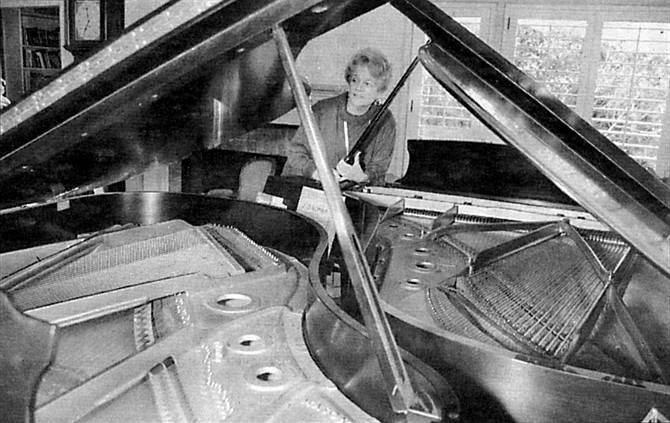
There are several grand pianos in San Diego County that are more than 100 years old. I visited Mrs. Paul Ringler to examine and play her 1883 Steinway “B.” Mrs. Ringler, now in her 80s, was a skilled accompanist for many decades. She explained that she had always wanted a seven-foot “B” because she felt it blended best with other instruments, not overpowering as the nine-foot “D” might do but giving full support, nevertheless.
By David Burge, April 27, 1995 | Read full article
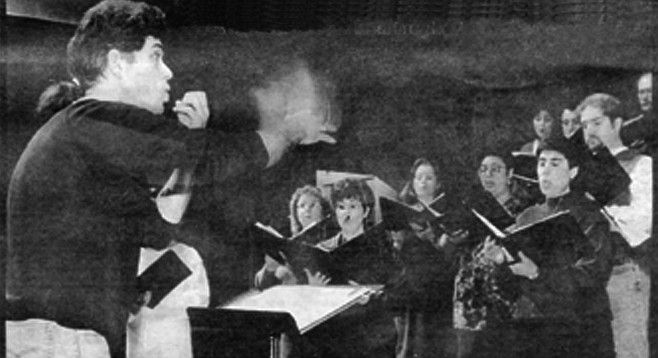
“Being a composer is the most difficult discipline in the music field. You have to know all the instruments, how they are played, what their ranges are, their timbres, their idiosyncrasies. Obviously you must also know the fundamentals of traditional harmony, counterpoint, and orchestration. And it’s essential to be able to write a proper score and parts; and to do that, to really get the feel for it, it really helps to play in an orchestra.”
By David Burge, April 18, 1996 | Read full article

Best Instrument, the St. Brigid Parish Organ, builder Martin Ott (runners-up St. Paul’s & All Souls’ Episcopal)
Lifetime Achievement, Spreckels Organ
Best Performance by an Organist, Robert Plimpton, for Vierne’s Fourth at Fete Vierne (runner-up Kathleen Scheide)
Best Event, Jared Jacobsen and Jim Simonton, for Fete Vierne
Best Technological Development, Lyle Blackinton, for the unpatented and much-copied action at First Methodist
Best Organ Case, All Souls’ Episcopal Church (runner-up First Church of Christ, Scientist, La Mesa).
By John Granger, April 9, 1998 | Read full article
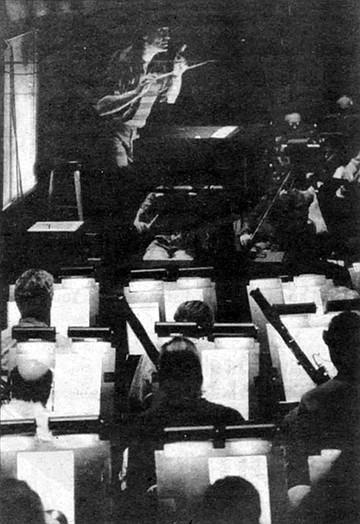
My new husband and I settled, after spending the first few months of our marriage in a North Park cottage that was above our means, costing $350 per month when his symphony salary was roughly $360 every other week. We had one car between us, foraged in thrift shops for cool clothes, did laundry at the laundromat on 30th Street right up the alley, bought groceries at the farmers’ market downtown between K and L Streets.
By Cris Mazza, Sept. 24, 1998 | Read full article
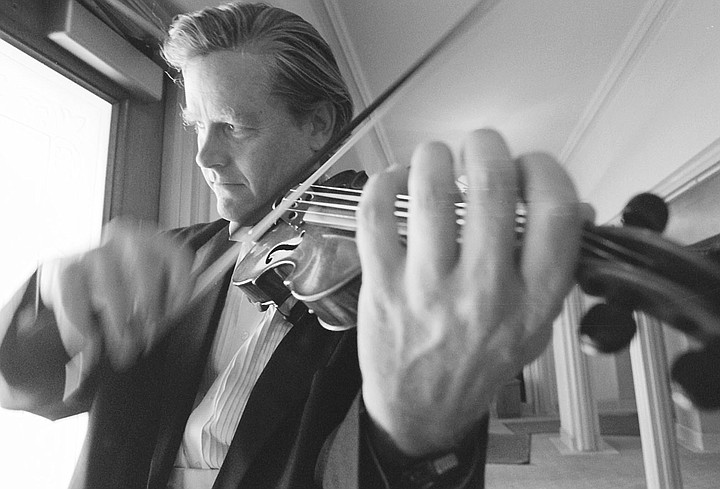
After the tape recorder is off, Grant expresses his love of Mozart, Haydn, Handel, and Vivaldi. “I like all the old Italians like Corelli, Tartini, Frescobaldi. Great old rococo period and late baroque.” He might have been talking about pasta for all I knew. “Also Handel’s Opus No. 6 Concerto Grossi. You know that piece?” “No. So that’s the kind of thing you might put on at home to relax?” “Maybe. I wouldn’t put on Beethoven to relax.”
By John Brizzolara, Nov. 16, 2000 | Read full article
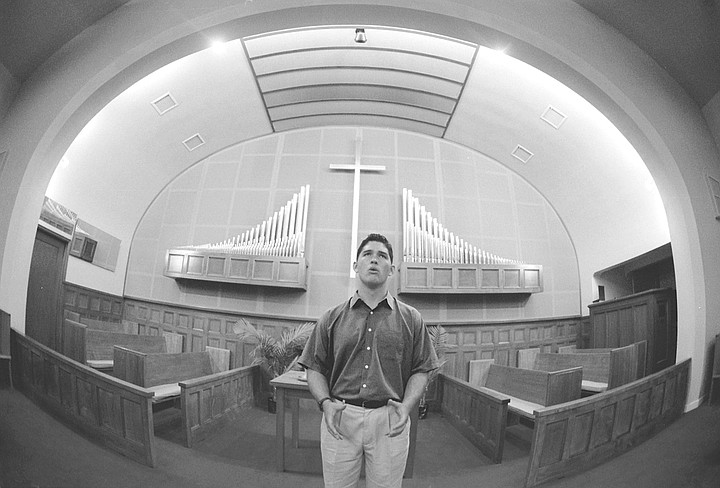
In 1997, Mary and I, married for two years, bought a house in Rolando, and we bought a spinet piano so Mary could practice. I photocopied tenor arias from the downtown library and brought them home for Mary to play and me to sing. I learned “Vesti la giubba” from Pagliacci — think of a crying clown and a Circuit City commercial. I tried to learn “La donna é mobile” from Verdi’s Rigoletto.
By Ernie Grimm, June 28, 2001 | Read full interview
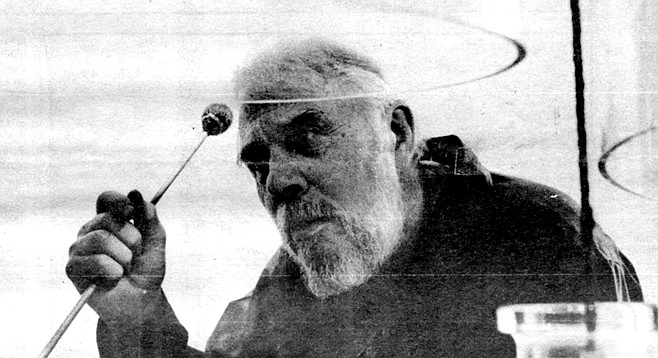
The instruments are in varying states of sickness and health. While some can be replaced – improved even, as is the case with the New Boo built by local composer Cris Forster – others cannot. The Cloud-Chamber Bowls, for example, which sound like liquid gongs, are made of brittle, twelve-gallon Pyrex containers, which Partch obtained from the radiation laboratory glass shop at UC Berkeley in 1950. If one shatters during the heat of a performance, it is irreplaceable.
By Jeff Smith, Sept. 25, 1980 | Read full article

A San Diego woman had held a benefit in her home to raise the scholarship funds. After the benefit, however, Mrs. Romero and Gustavo discovered that the woman expected them to be at her beck and call, to write thank-you notes and perform other such tasks. When the Romeros balked at the cavalier treatment, the woman refused to turn over the money; even when pressured by other contributors, she ultimately released only half of it.
By Jeanette De Wyze, Jan. 29, 1981 | Read full article

“I’ve always been extreme, musically and otherwise. So it manifests itself in my music. There’s this sense I have of tearing through, either tearing through my soul, or tearing through the top of my head. I’m going beyond my body, not in the crappy, mediumistic sense. I mean I'm taking myself as far as I can go. Think about speaking in tongues, a need to speak. When you need to speak, the need is felt directly.”
By Bob Dorn, May 19, 1983 | Read full article
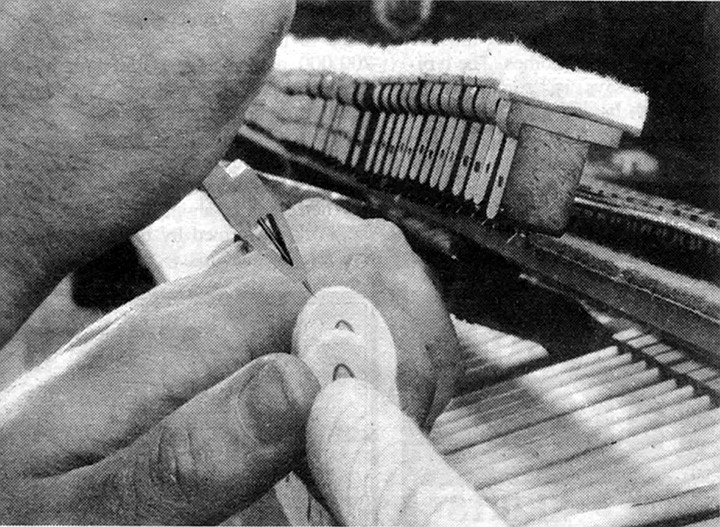
The piano had certainly led a life, if the ivory tops of the keys were any indication. Some of them were chipped, others cracked, still others bore the stains of ink and crayons that no amount of bleaching could ever remove; one top had been burned by a cigarette. Thile was removing the aged tops, but instead of using more ivory to replace them, he’d used a simulated ivory made of molded plastic.
By David Steinman, July 21, 1983 | Read full article
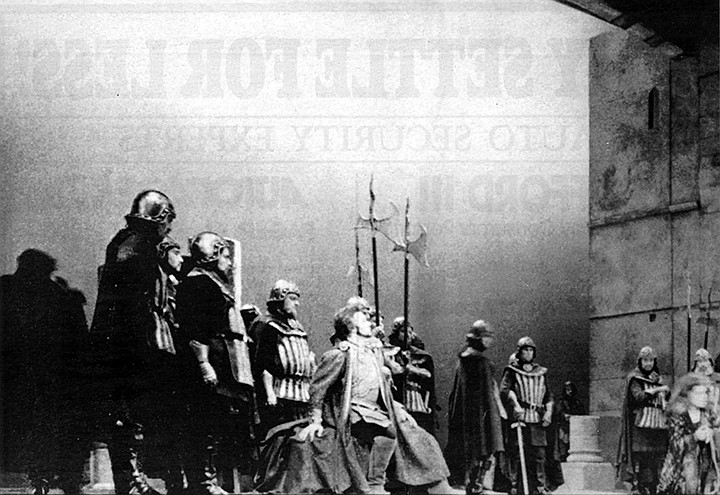
The big problem during the run-through was Nagy, but not because he couldn’t sing. He had a dark, dry, metallic voice that sounded secure enough on the top notes, even though he seemed unable to shade it or to spin out a long melodic phrase. The immediate problem was one of communication. He spoke only Hungarian. Gregson was forced to walk him through and pantomime every movement, gesture, or bit of business.
By William Murray, April 14, 1988 | Read full article
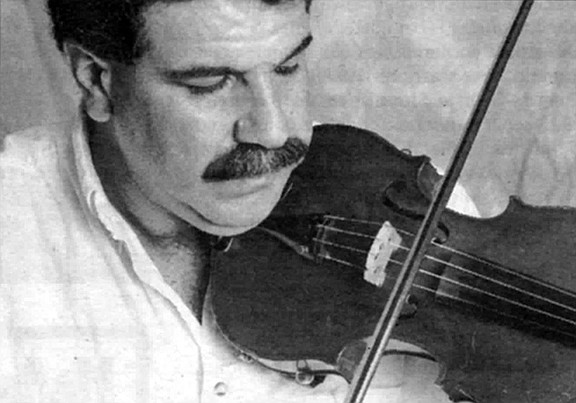
“You’ve got to have four people that really want to play, who don’t bitch and complain. Whiners, you know? People to whom you have to say, ‘I’ll pay you extra if you play 15 minutes more.’ It’s not like they’re really committed to it. It’s like, bam, and they’re out of there — give-me-the-money-and-run kind of thing. Everybody wants to be paid and everything, but at the same time, you’ve got to be diplomatic about it.”
By John Brizzolara, Oct. 20, 1994 | Read full article


There are several grand pianos in San Diego County that are more than 100 years old. I visited Mrs. Paul Ringler to examine and play her 1883 Steinway “B.” Mrs. Ringler, now in her 80s, was a skilled accompanist for many decades. She explained that she had always wanted a seven-foot “B” because she felt it blended best with other instruments, not overpowering as the nine-foot “D” might do but giving full support, nevertheless.
By David Burge, April 27, 1995 | Read full article

“Being a composer is the most difficult discipline in the music field. You have to know all the instruments, how they are played, what their ranges are, their timbres, their idiosyncrasies. Obviously you must also know the fundamentals of traditional harmony, counterpoint, and orchestration. And it’s essential to be able to write a proper score and parts; and to do that, to really get the feel for it, it really helps to play in an orchestra.”
By David Burge, April 18, 1996 | Read full article

Best Instrument, the St. Brigid Parish Organ, builder Martin Ott (runners-up St. Paul’s & All Souls’ Episcopal)
Lifetime Achievement, Spreckels Organ
Best Performance by an Organist, Robert Plimpton, for Vierne’s Fourth at Fete Vierne (runner-up Kathleen Scheide)
Best Event, Jared Jacobsen and Jim Simonton, for Fete Vierne
Best Technological Development, Lyle Blackinton, for the unpatented and much-copied action at First Methodist
Best Organ Case, All Souls’ Episcopal Church (runner-up First Church of Christ, Scientist, La Mesa).
By John Granger, April 9, 1998 | Read full article

My new husband and I settled, after spending the first few months of our marriage in a North Park cottage that was above our means, costing $350 per month when his symphony salary was roughly $360 every other week. We had one car between us, foraged in thrift shops for cool clothes, did laundry at the laundromat on 30th Street right up the alley, bought groceries at the farmers’ market downtown between K and L Streets.
By Cris Mazza, Sept. 24, 1998 | Read full article

After the tape recorder is off, Grant expresses his love of Mozart, Haydn, Handel, and Vivaldi. “I like all the old Italians like Corelli, Tartini, Frescobaldi. Great old rococo period and late baroque.” He might have been talking about pasta for all I knew. “Also Handel’s Opus No. 6 Concerto Grossi. You know that piece?” “No. So that’s the kind of thing you might put on at home to relax?” “Maybe. I wouldn’t put on Beethoven to relax.”
By John Brizzolara, Nov. 16, 2000 | Read full article

In 1997, Mary and I, married for two years, bought a house in Rolando, and we bought a spinet piano so Mary could practice. I photocopied tenor arias from the downtown library and brought them home for Mary to play and me to sing. I learned “Vesti la giubba” from Pagliacci — think of a crying clown and a Circuit City commercial. I tried to learn “La donna é mobile” from Verdi’s Rigoletto.
By Ernie Grimm, June 28, 2001 | Read full interview

The instruments are in varying states of sickness and health. While some can be replaced – improved even, as is the case with the New Boo built by local composer Cris Forster – others cannot. The Cloud-Chamber Bowls, for example, which sound like liquid gongs, are made of brittle, twelve-gallon Pyrex containers, which Partch obtained from the radiation laboratory glass shop at UC Berkeley in 1950. If one shatters during the heat of a performance, it is irreplaceable.
By Jeff Smith, Sept. 25, 1980 | Read full article

A San Diego woman had held a benefit in her home to raise the scholarship funds. After the benefit, however, Mrs. Romero and Gustavo discovered that the woman expected them to be at her beck and call, to write thank-you notes and perform other such tasks. When the Romeros balked at the cavalier treatment, the woman refused to turn over the money; even when pressured by other contributors, she ultimately released only half of it.
By Jeanette De Wyze, Jan. 29, 1981 | Read full article

“I’ve always been extreme, musically and otherwise. So it manifests itself in my music. There’s this sense I have of tearing through, either tearing through my soul, or tearing through the top of my head. I’m going beyond my body, not in the crappy, mediumistic sense. I mean I'm taking myself as far as I can go. Think about speaking in tongues, a need to speak. When you need to speak, the need is felt directly.”
By Bob Dorn, May 19, 1983 | Read full article

The piano had certainly led a life, if the ivory tops of the keys were any indication. Some of them were chipped, others cracked, still others bore the stains of ink and crayons that no amount of bleaching could ever remove; one top had been burned by a cigarette. Thile was removing the aged tops, but instead of using more ivory to replace them, he’d used a simulated ivory made of molded plastic.
By David Steinman, July 21, 1983 | Read full article

The big problem during the run-through was Nagy, but not because he couldn’t sing. He had a dark, dry, metallic voice that sounded secure enough on the top notes, even though he seemed unable to shade it or to spin out a long melodic phrase. The immediate problem was one of communication. He spoke only Hungarian. Gregson was forced to walk him through and pantomime every movement, gesture, or bit of business.
By William Murray, April 14, 1988 | Read full article

“You’ve got to have four people that really want to play, who don’t bitch and complain. Whiners, you know? People to whom you have to say, ‘I’ll pay you extra if you play 15 minutes more.’ It’s not like they’re really committed to it. It’s like, bam, and they’re out of there — give-me-the-money-and-run kind of thing. Everybody wants to be paid and everything, but at the same time, you’ve got to be diplomatic about it.”
By John Brizzolara, Oct. 20, 1994 | Read full article
Comments